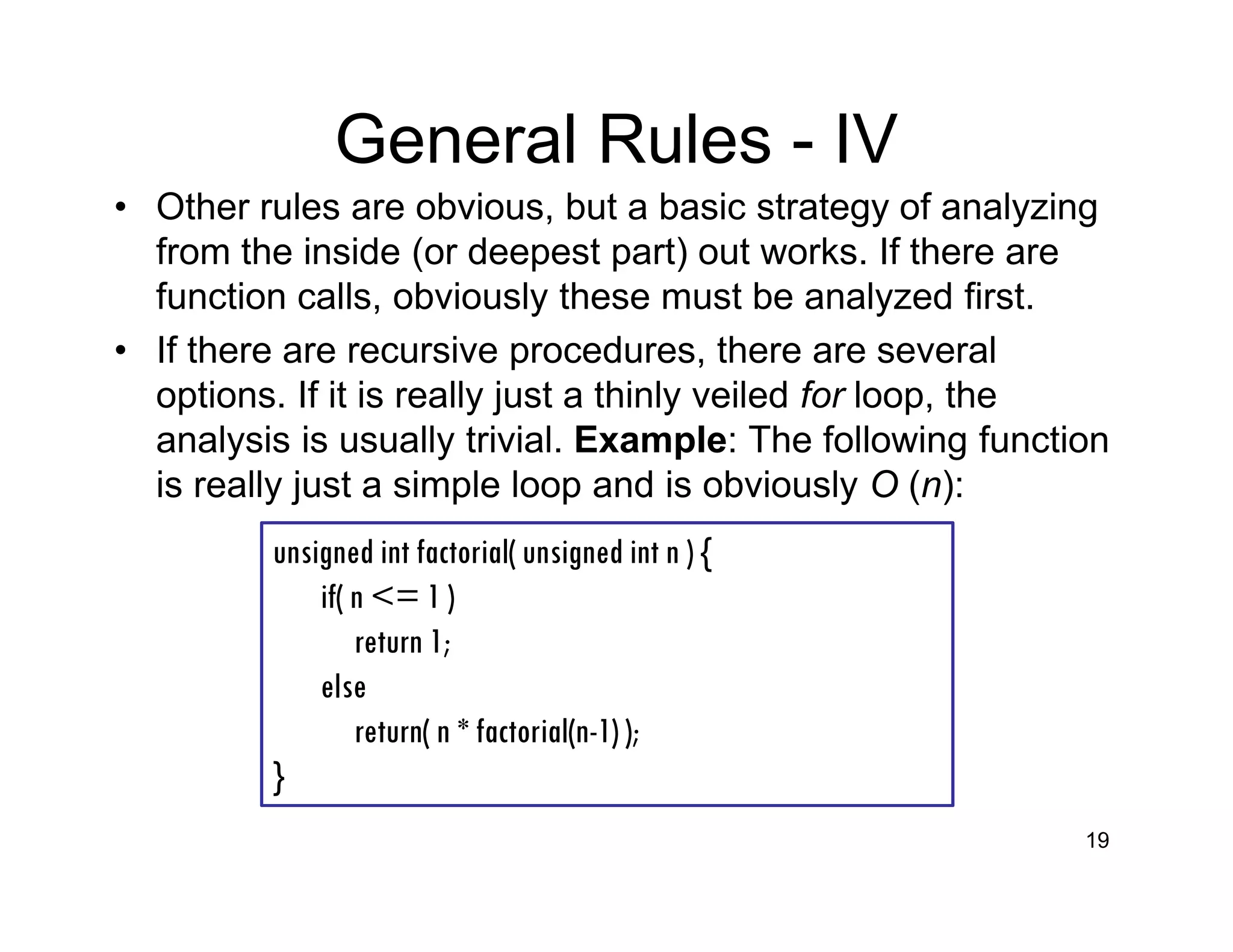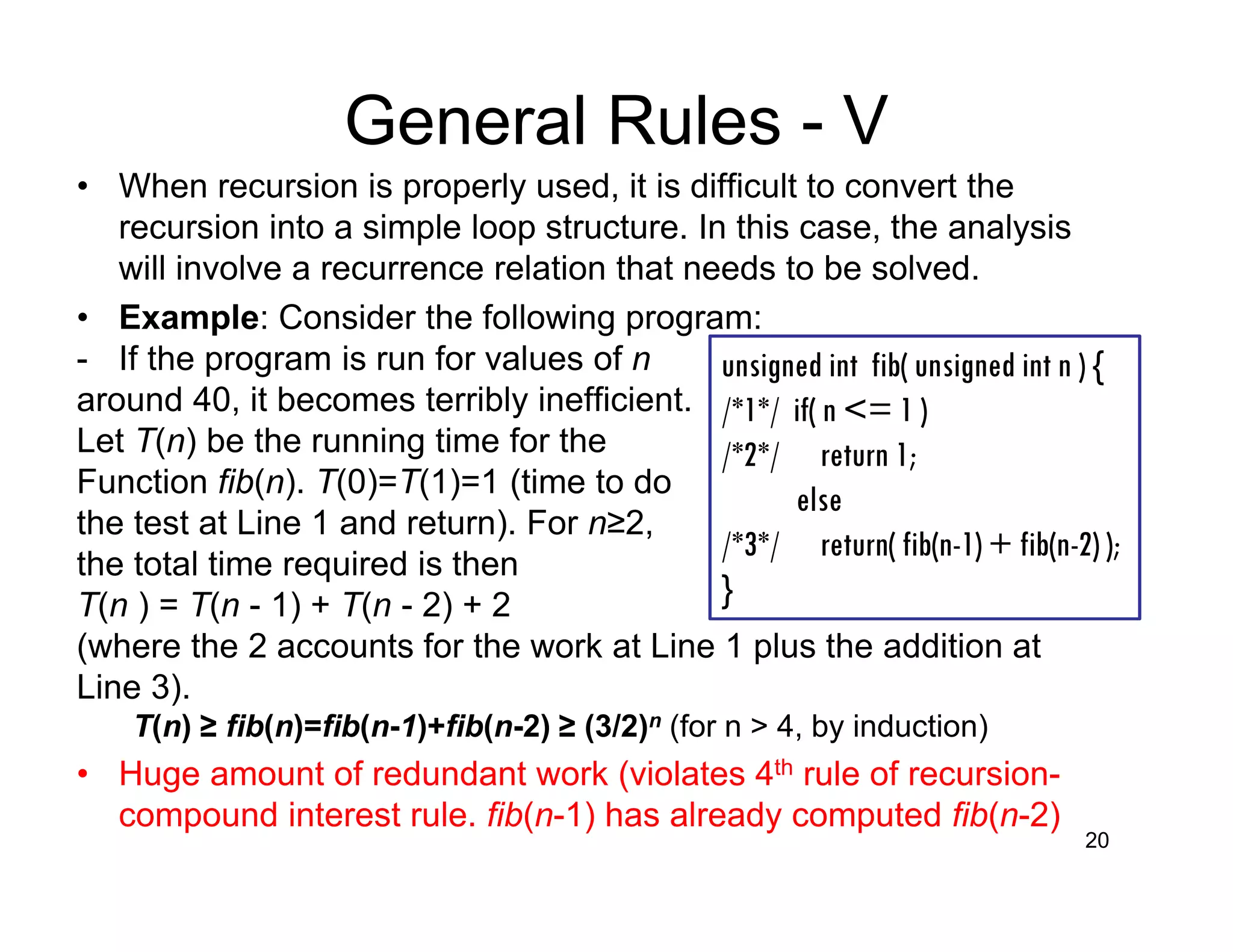This document discusses algorithm analysis and asymptotic notation. It defines common asymptotic notations like O(N), Ω(N), and Θ(N) and provides examples of analyzing simple algorithms and determining their time complexities. The document also outlines general rules for analyzing algorithms with loops, nested loops, consecutive statements, and recursion to determine their asymptotic running times.
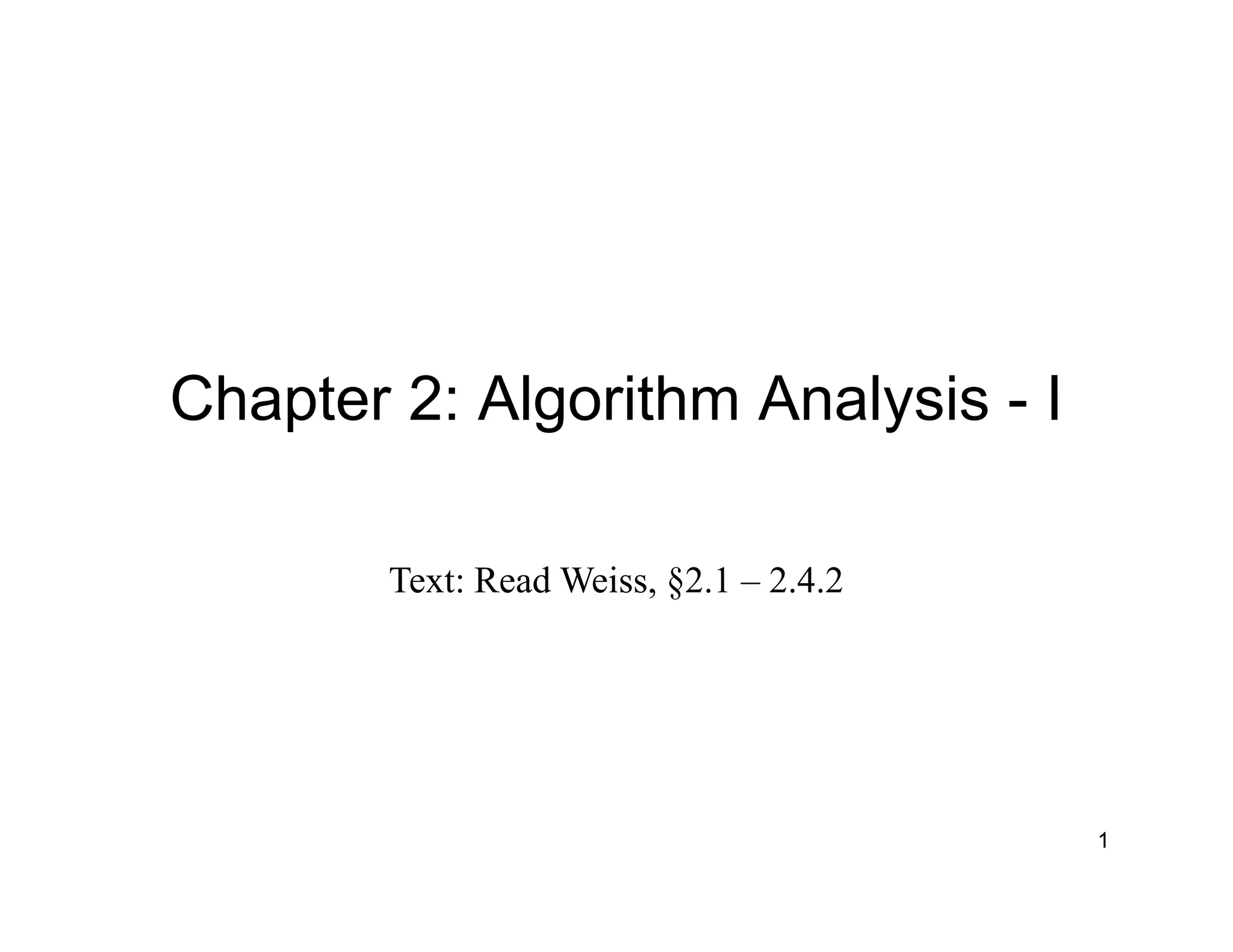
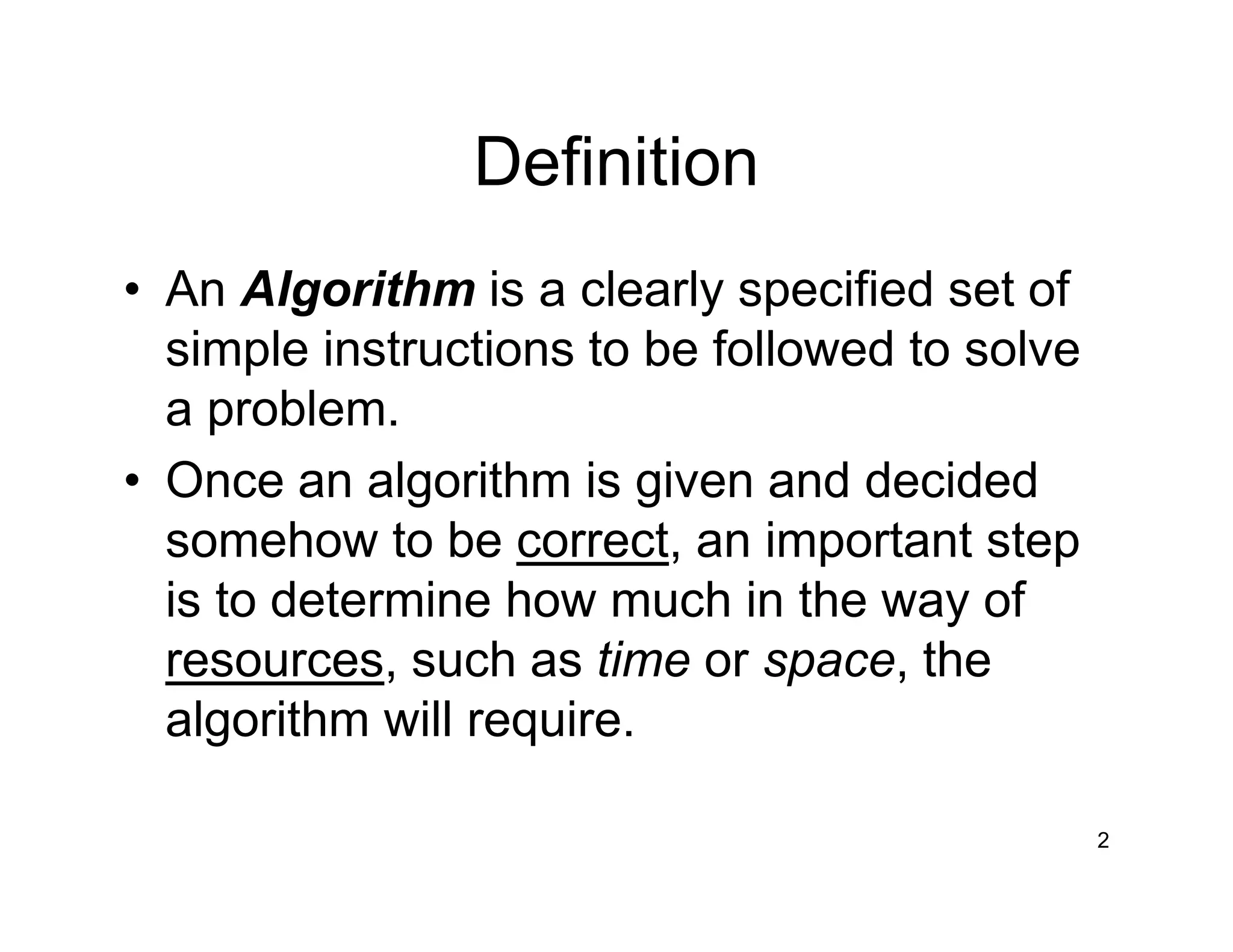

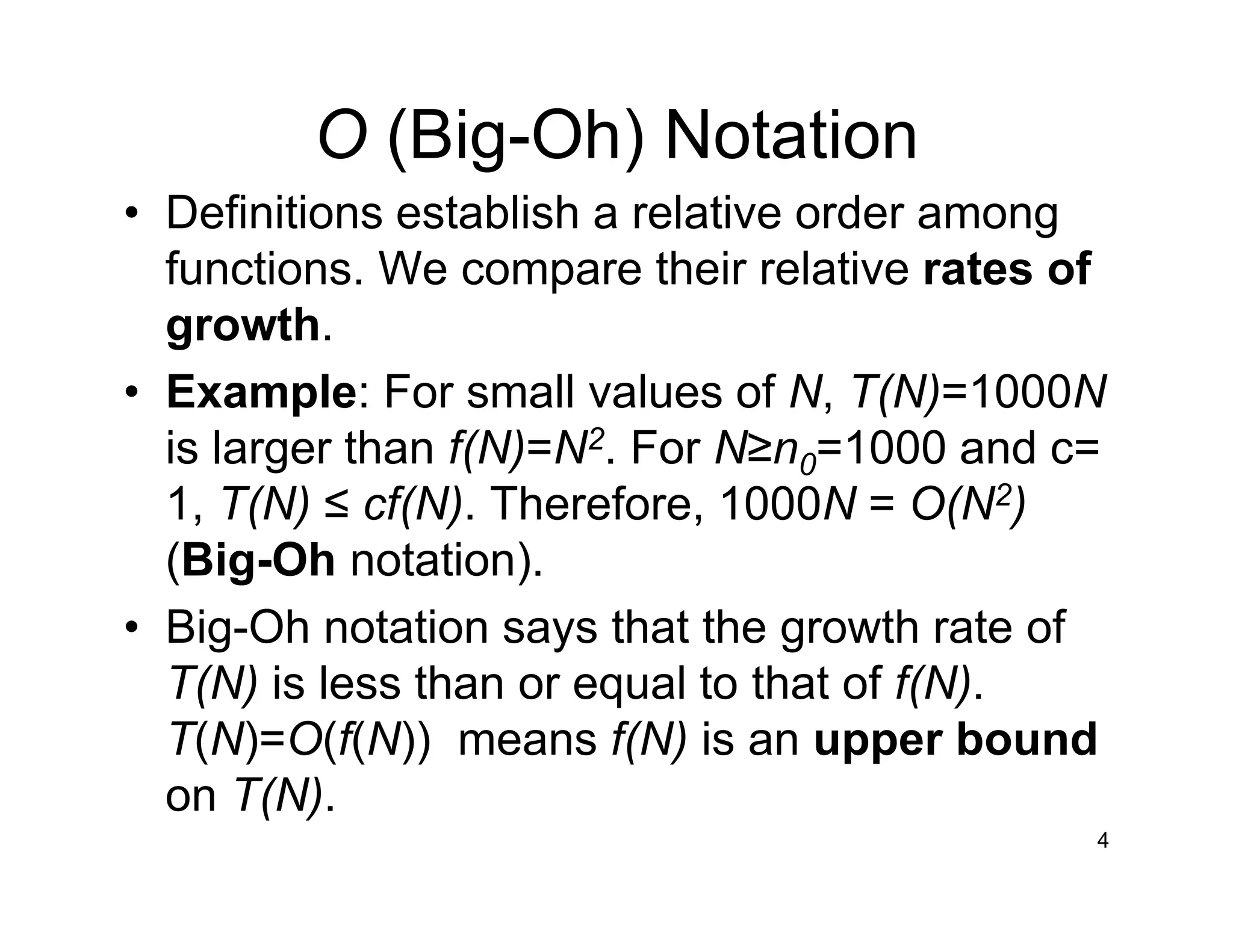
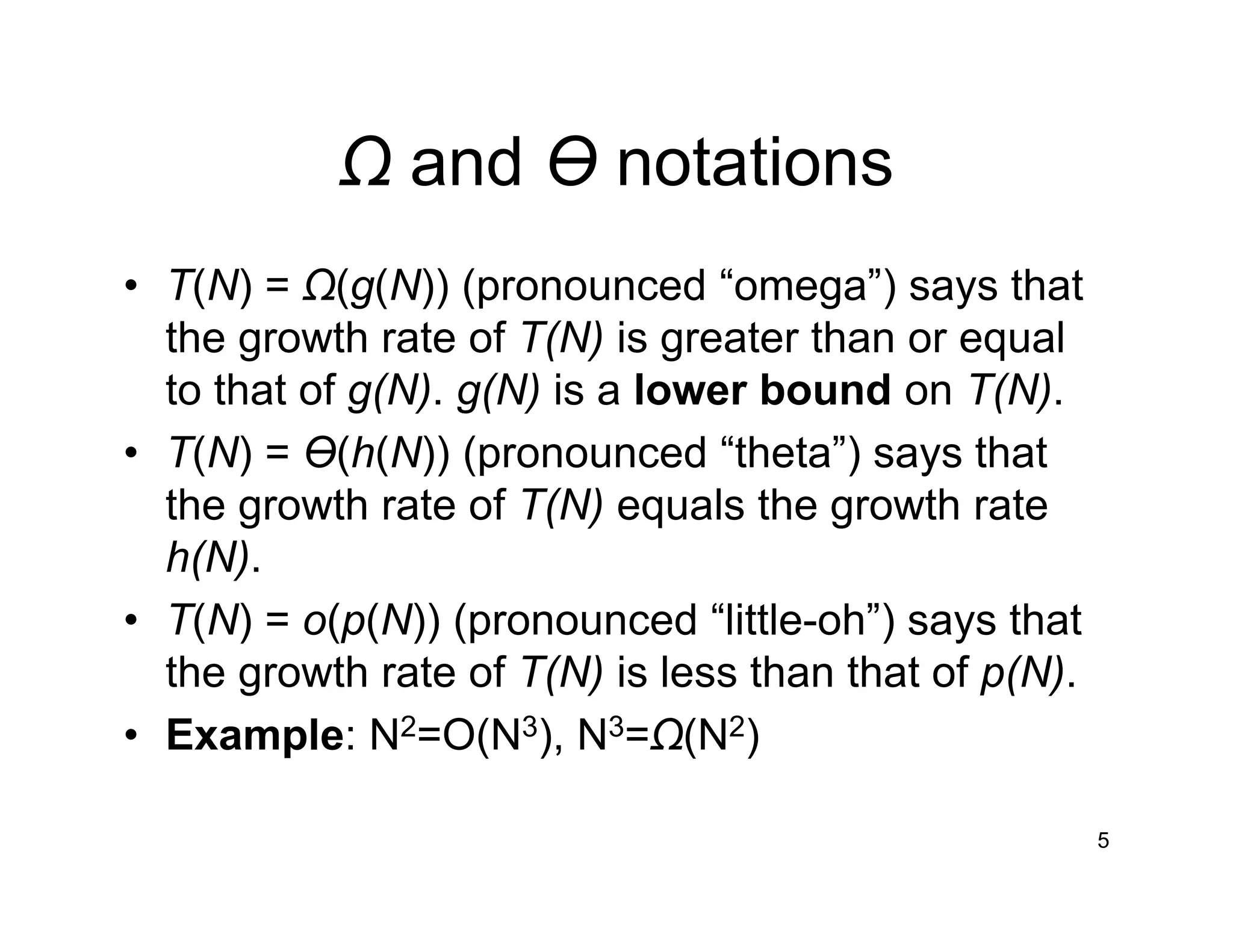
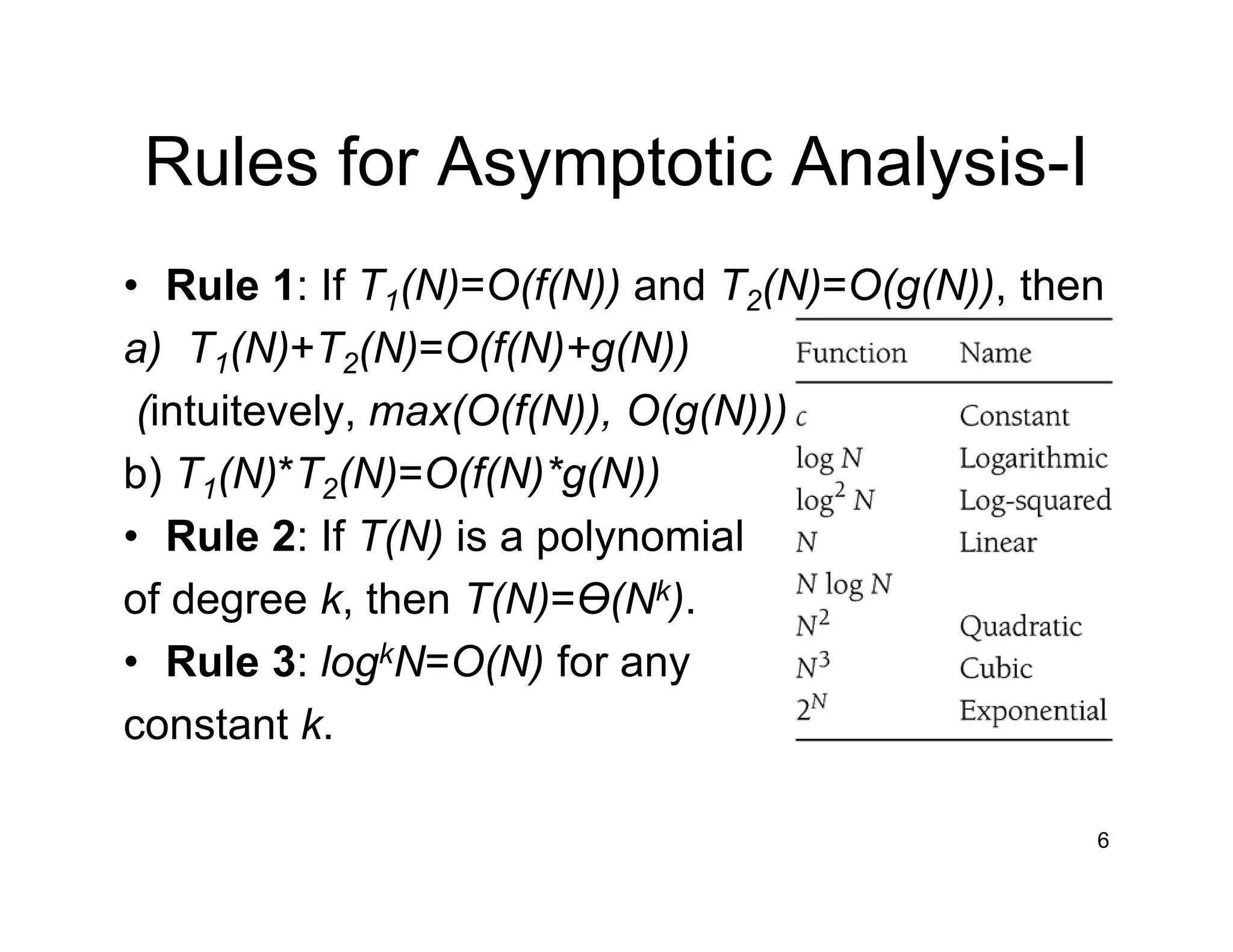
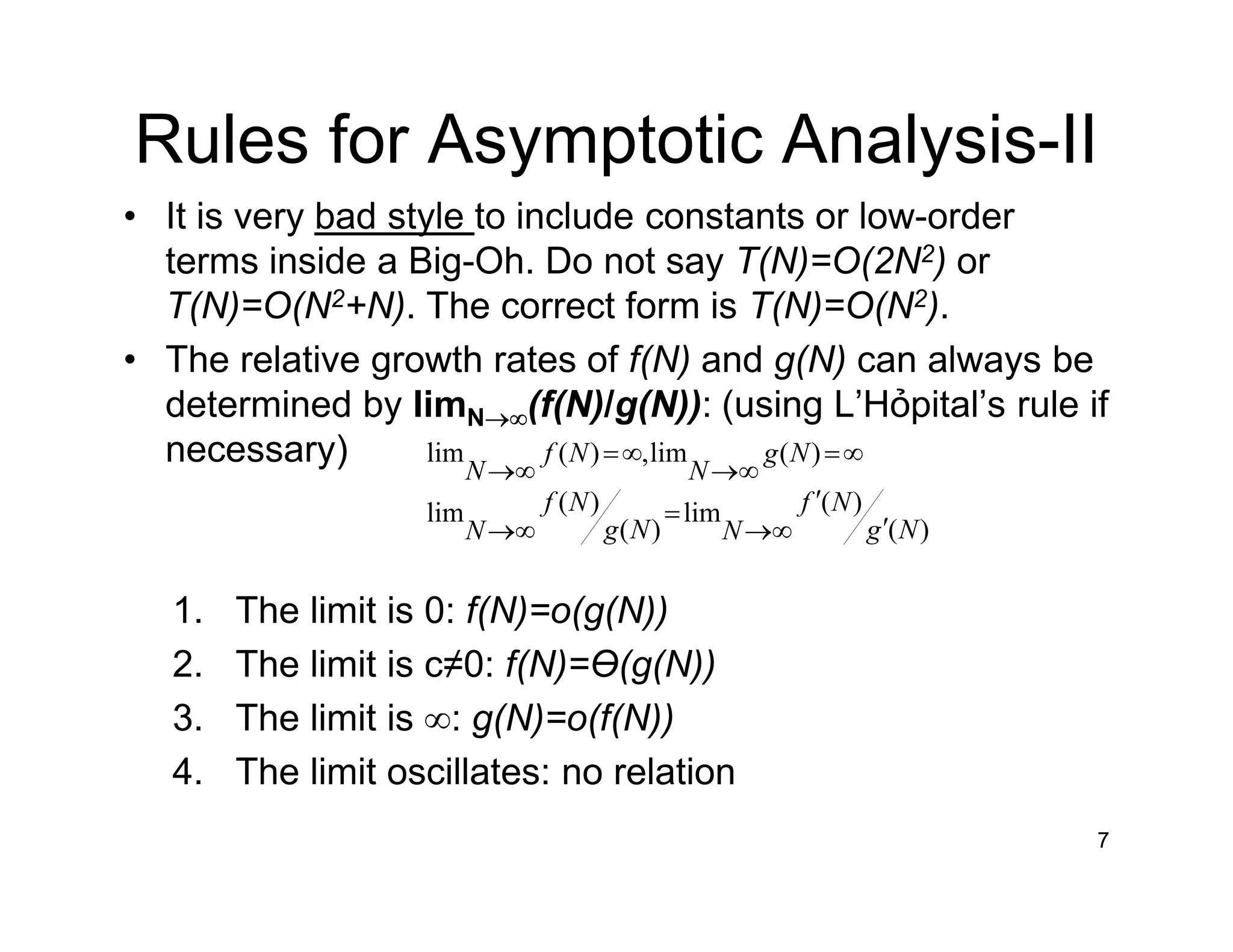
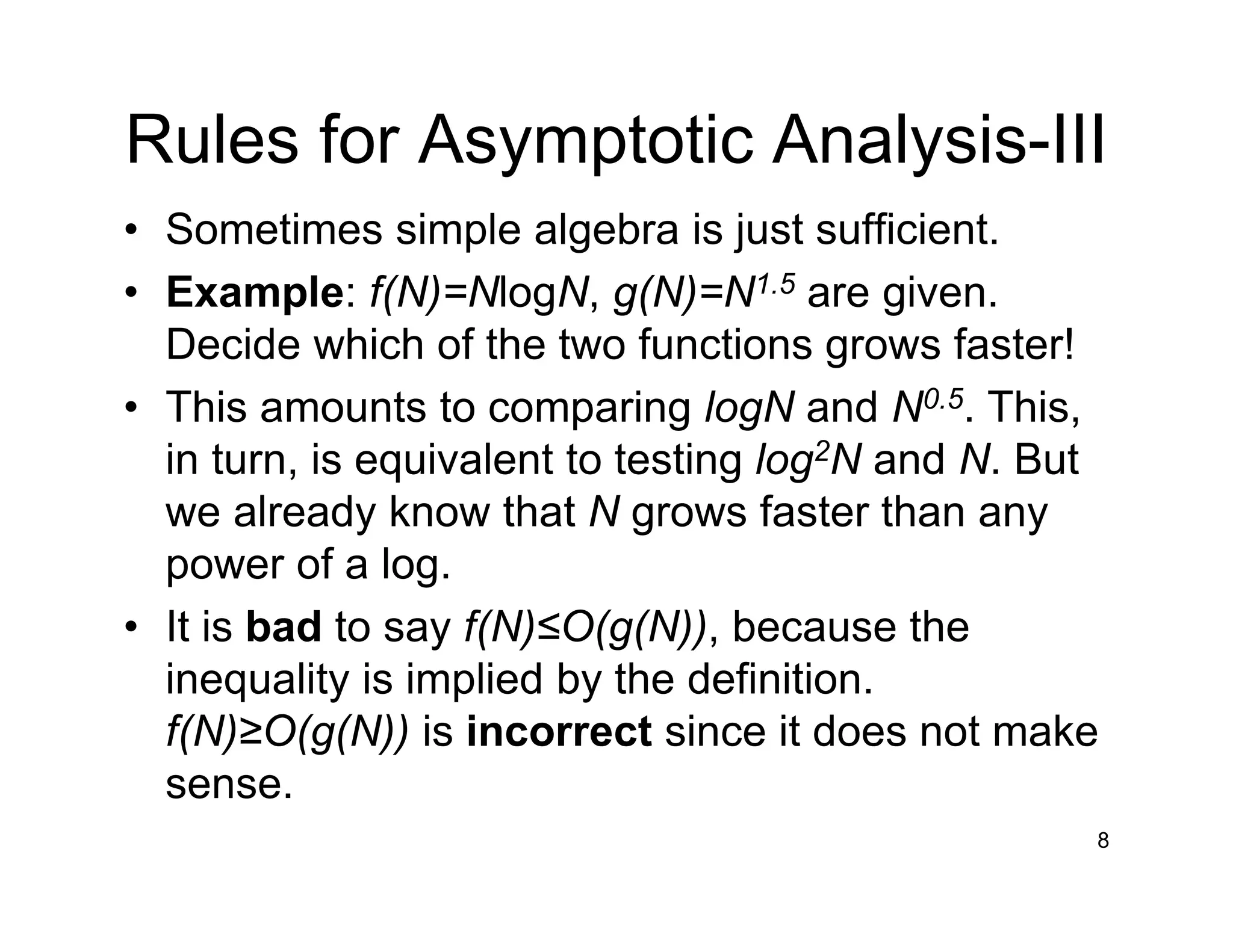
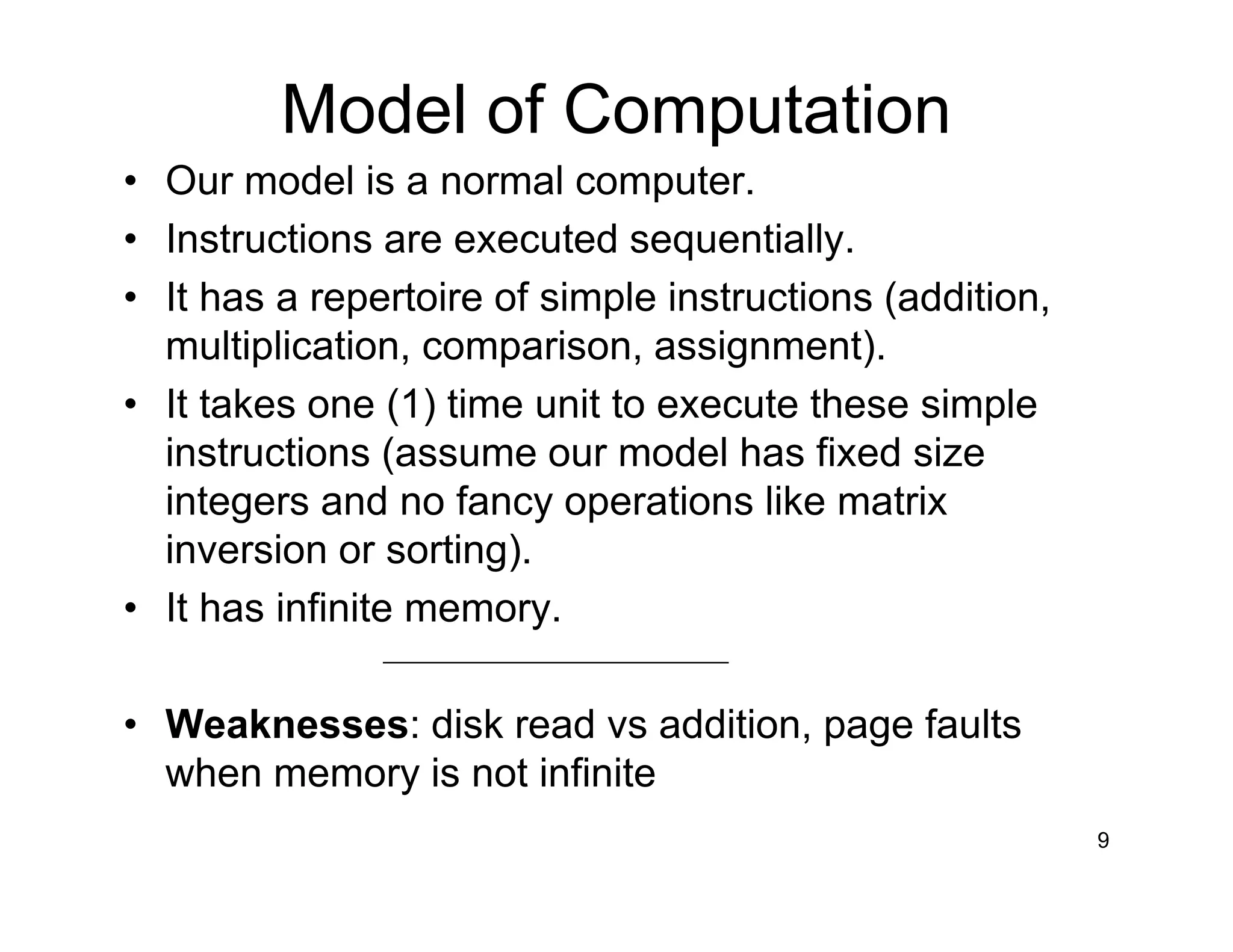
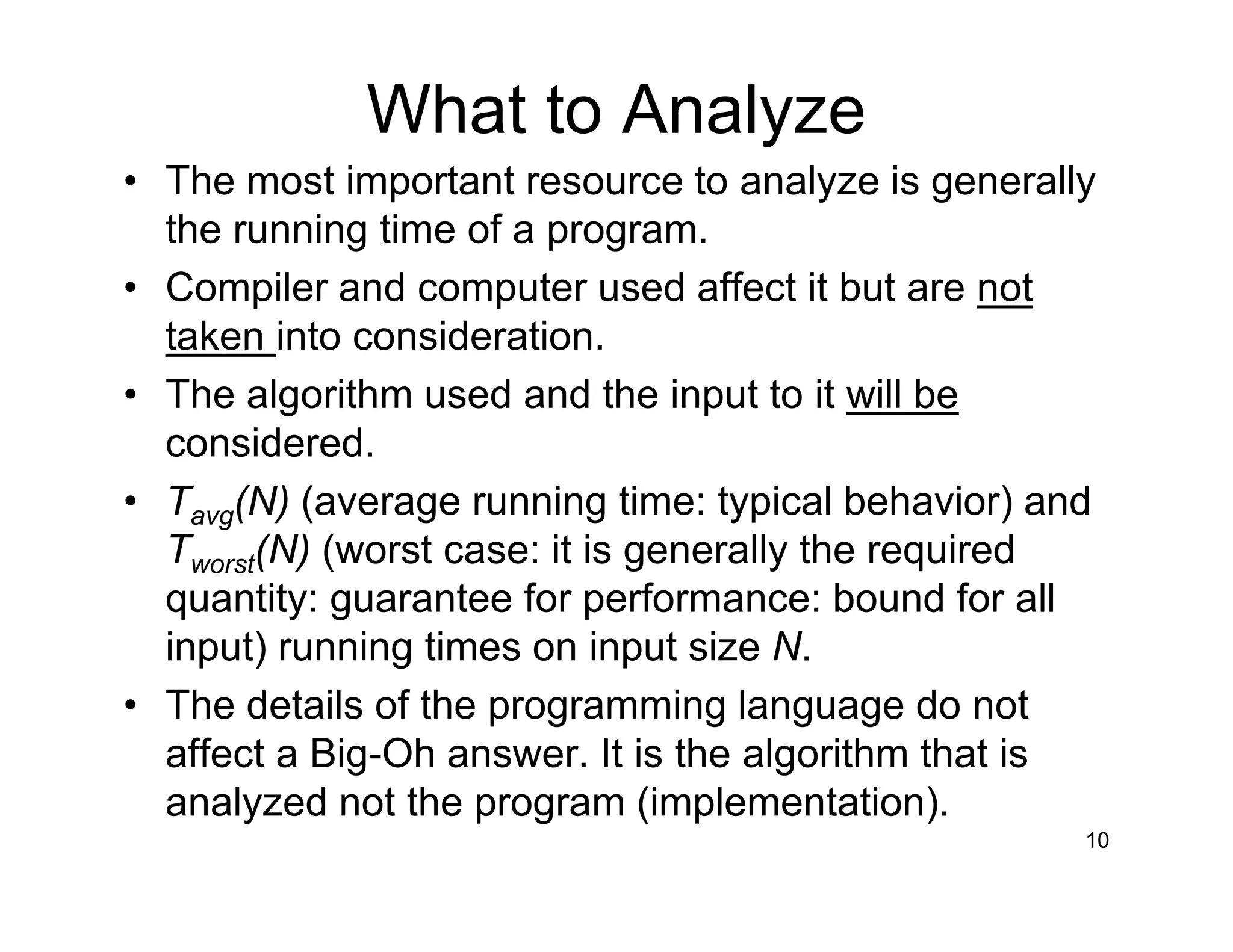
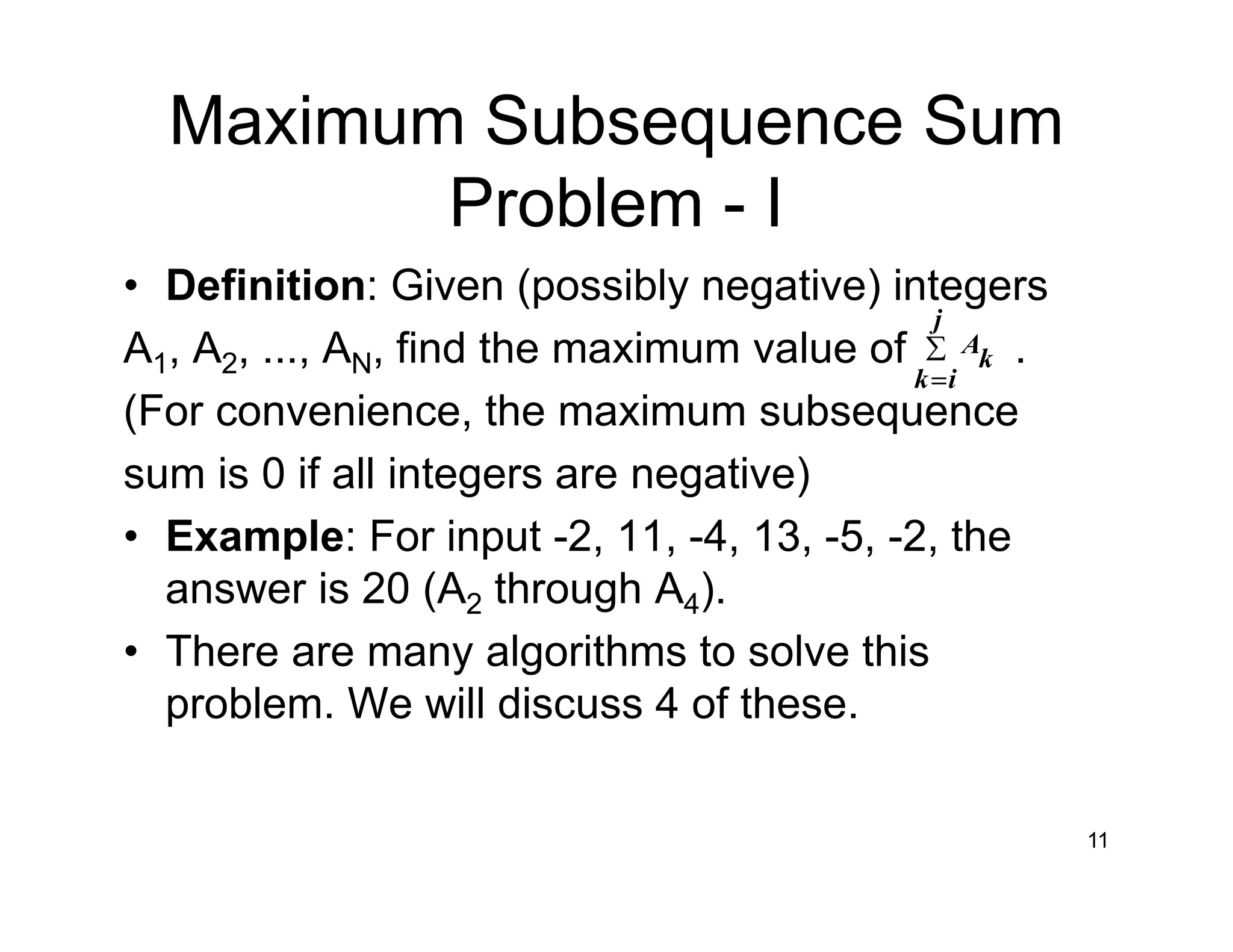


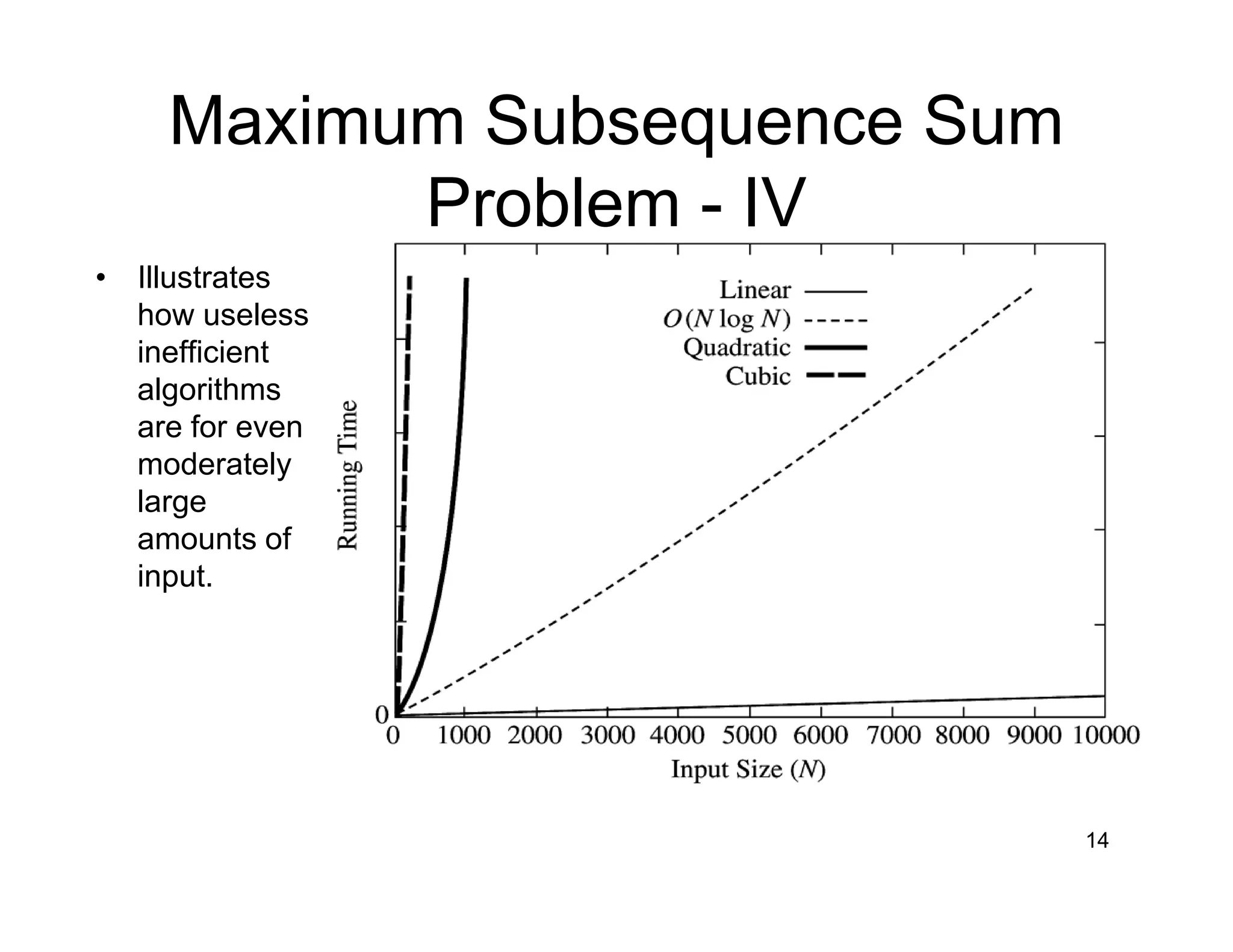
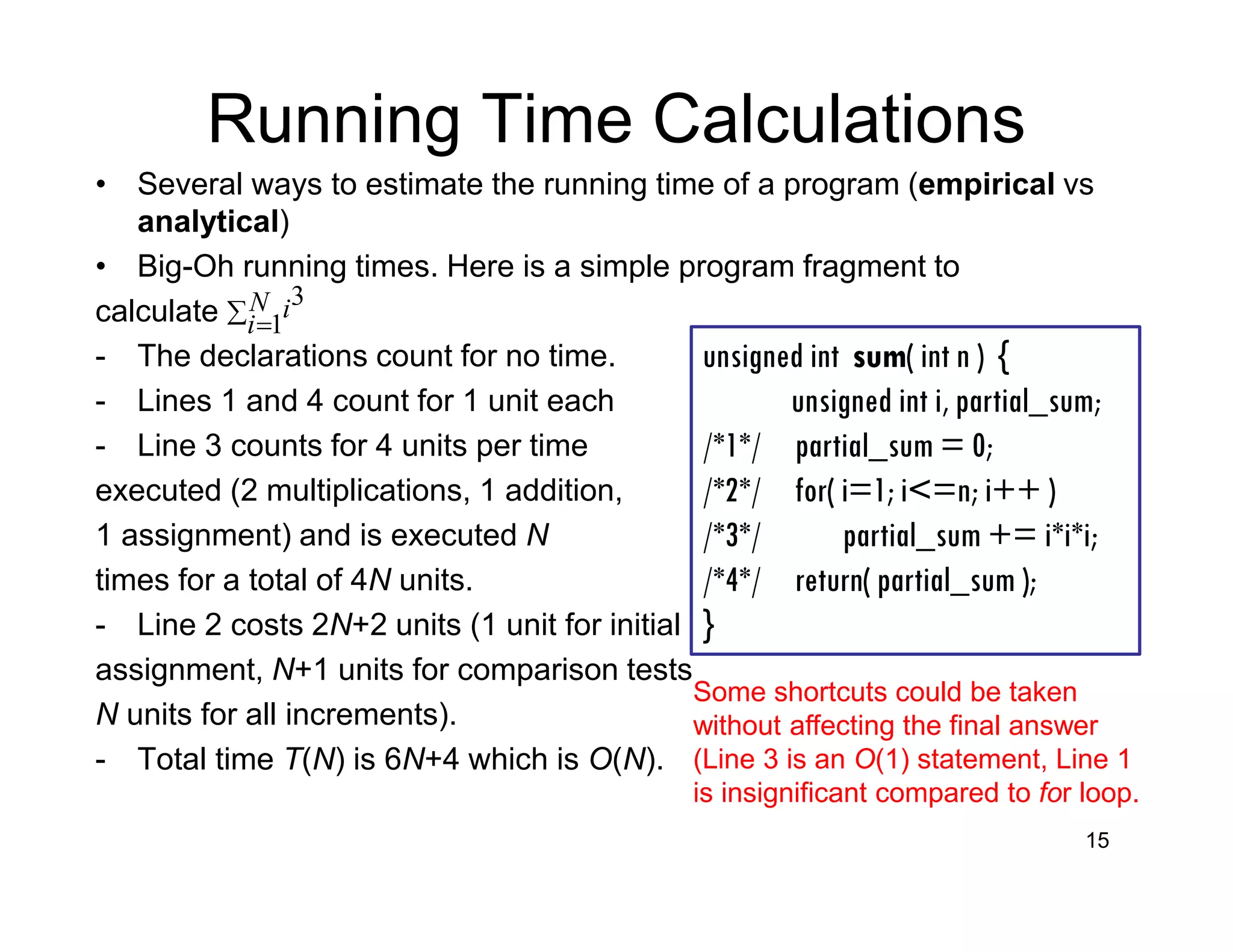
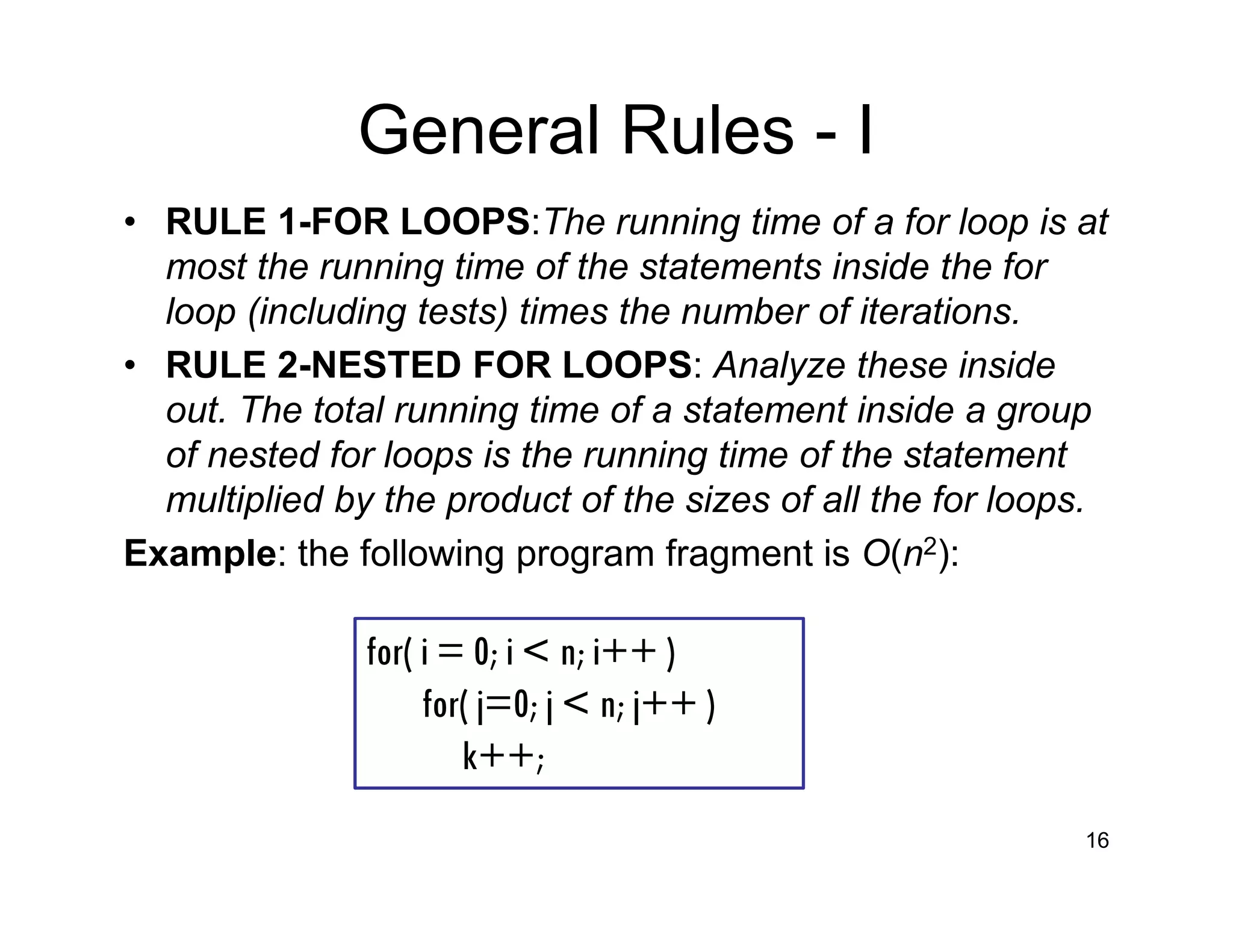
![General Rules - II
• RULE 3-CONSECUTIVE STATEMENTS: These just
add (which means that the maximum is the one that
counts – Rule 1(a) on page 6).
Example: the following program fragment, which has O(n)
work followed by O (n2) work, is also O (n2):
17
for( i = 0; i < n; i++)
a[i] = 0;
for( i = 0; i < n; i++ )
for( j = 0; j < n; j++ )
a[i] += a[j] + i + j;](https://image.slidesharecdn.com/2chapter2algorithmanalysispart1-181027235948/75/2-chapter2-algorithm_analysispart1-17-2048.jpg)

